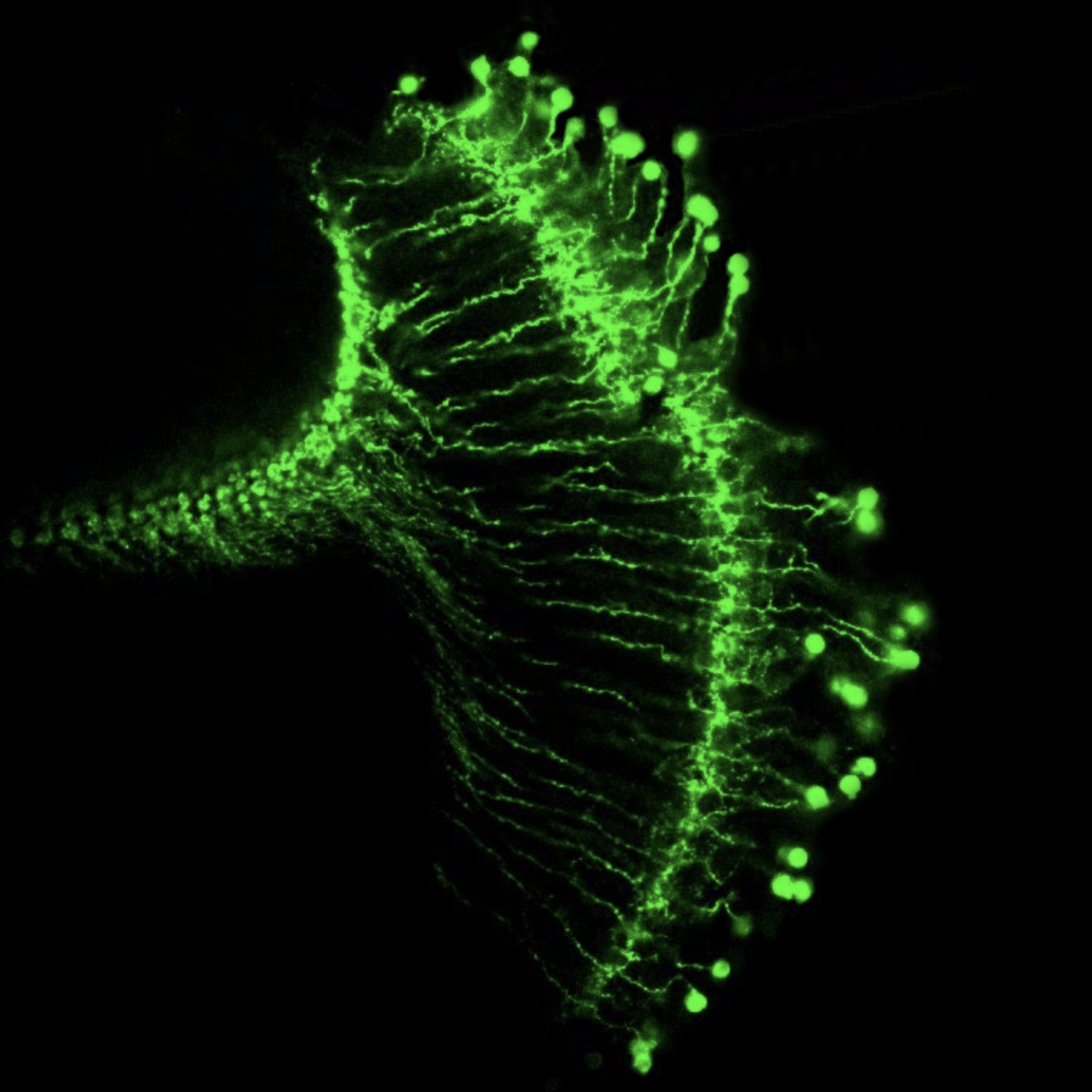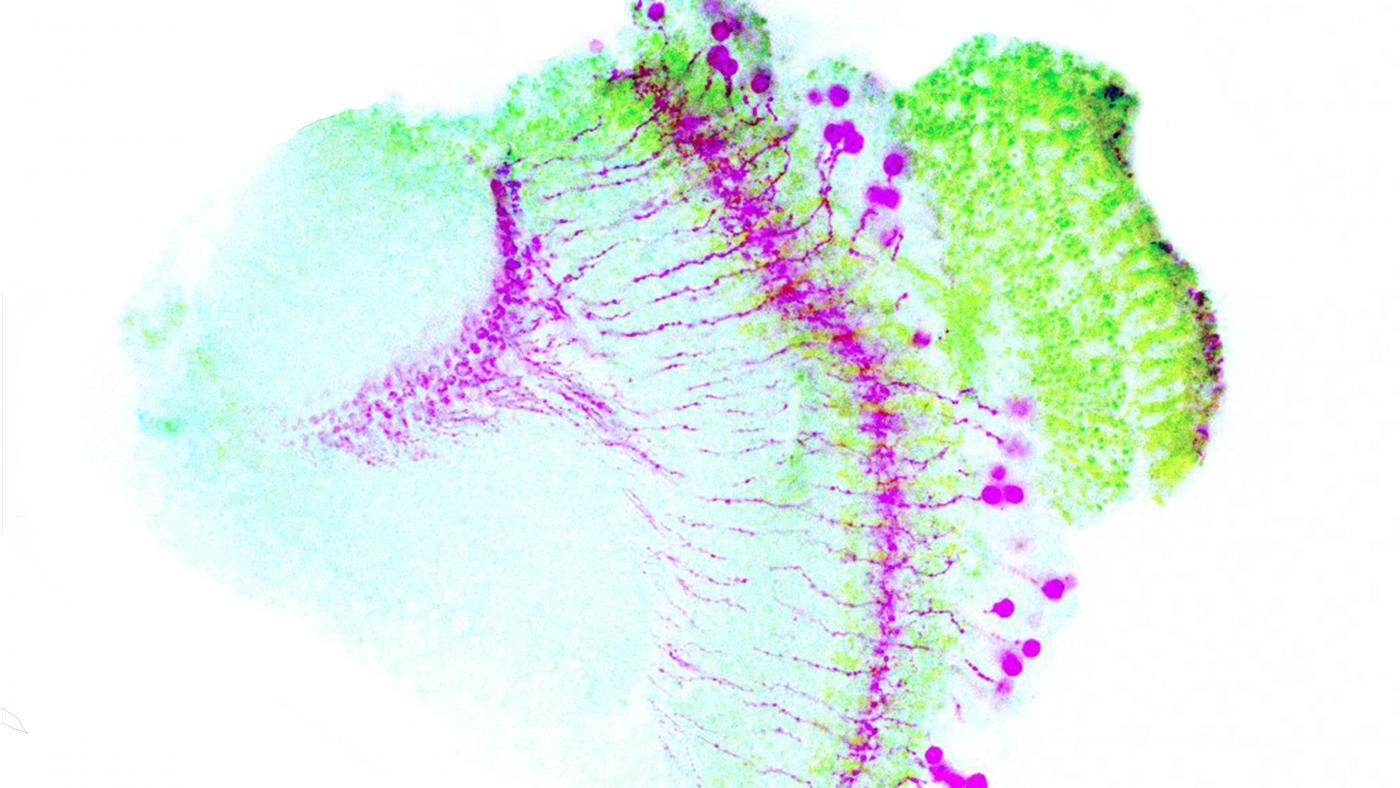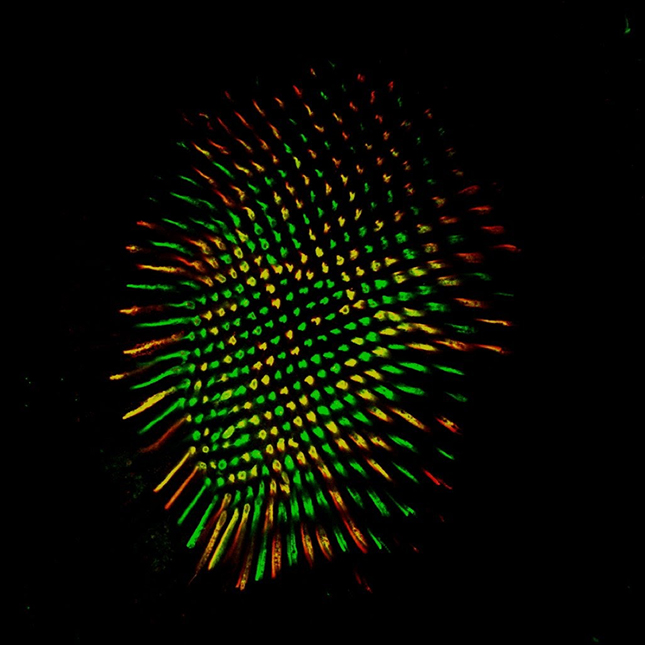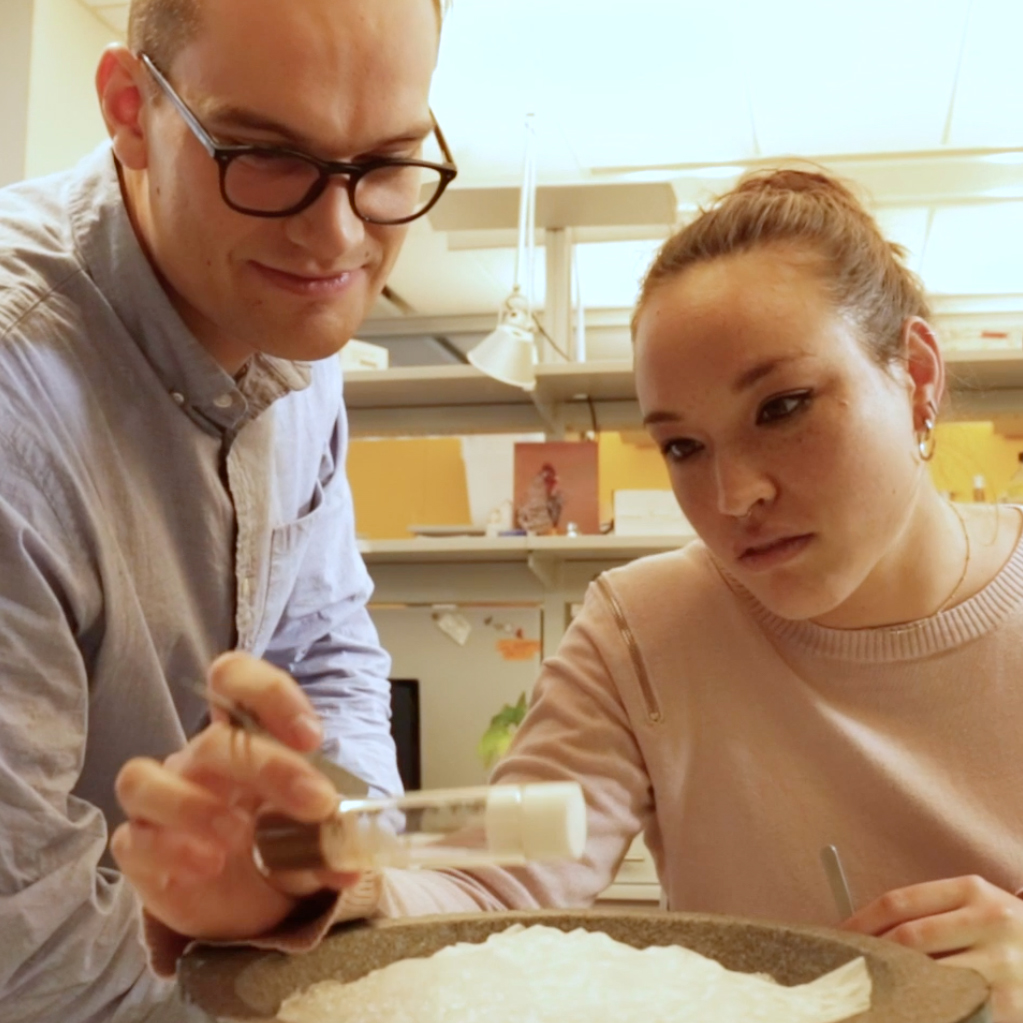Vision and other senses often seem to work effortlessly, which might give the impression that understanding the workings of sensory neurons, the brain cells that handle sensory information, would be easy. However, when it comes to a brain circuit of just five interconnected cells that helps the fruit fly Drosophila's visual system detect motion, scientists have disagreed about how it works for years.
Rudy Behnia, PhD, researches how sensory information is encoded within the fly brain, which is simpler to study than the brains of many other animals: flies have about 1,000 times fewer neurons than mice and about 1 million times fewer than humans. Her team may have finally discovered the secret of how the fruit fly’s visual motion detection circuit works. A recent paper published October 19 in Current Biology describes exciting new research on the subject from the lab of Dr. Behnia, a principal investigator at Columbia's Zuckerman Institute and an assistant professor of neuroscience at Columbia’s Vagelos College of Physicians & Surgeons.
We spoke about the work with Dr. Behnia as well as graduate students Jessica Kohn and Jacob Portes, the co-first authors of the new study and members of Behnia's lab. The researchers shared what their latest research has revealed, what it might mean for our understanding of brain circuitry in all animals and how this work could lead to better electronic brains for robots as well as better implants to restore vision.
Can you talk about the mystery surrounding the fruit fly's visual motion detection circuit?
Jacob Portes: This is one of the most highly studied brain circuits.
Jessica Kohn: You would think it would be pretty easy to be able to look at a few neurons and say, “This is how they work because this is how neuron A connects to neuron B.” But scientists have been trying to understand how insect vision detects motion for about 60 years. The neurons that fruit fly vision uses in motion detection were identified about 15 or so years ago, but how they work together has been unclear. It's been very frustrating for different researchers studying the same circuit of five cells to all get different results. We’ve been trying to figure out why this has happened.
Why has it proven so difficult understanding how this circuit works?
Rudy Behnia: It’s important to know that our vision doesn’t work like a camera, in which the connections between components lead to obvious results. A digital camera uses a grid of pixels and knows, for every pixel, what spectrum of colors make it up and what brightness it is. The camera constructs an image from this information. Our brains don’t do that at all. There are different circuits, different groups of brain cells working together, that extract important elements of a visual scene separately: what is moving or what is the contrast. The circuits carry out computations to extract these features. In addition, our eyes interpret visual information they receive depending on the environmental conditions and on our current needs, discarding irrelevant information and highlighting important features.
Kohn: There are a couple of different theoretical models of circuits that do a great job at explaining what computations a brain circuit might carry out to detect motion. The problem is the theoretical circuits of brain cells that scientists have proposed don’t actually match what’s actually seen in brains.
Your eyes can adjust quickly when you move from a brightly lit room to a dark room. Flies do the exact same thing, with very tiny circuits.
So what did you discover about this brain circuit in your latest work?
Kohn: The motion-detecting sensory circuit we studied is inherently flexible; it has to be able to switch between environments.
Portes: Your eyes can adjust quickly when you move from a brightly lit room to a dark room. Flies do the exact same thing, with very tiny circuits.
Kohn: But previous experiments did not take this flexibility into account. They tended to expose flies to a single situation when building models.
Portes: A number of the discrepancies reported in the past about this circuit may have had to do with the different stimuli that different laboratories were showing. These stimuli would make the circuit act in different ways, and they would draw different conclusions from that. So, for example, one lab might show a fly a bright, moving flash. The response of these cells to that flash might be different than if you showed them a white noise pattern, like static on a TV. It might be different again if you showed them a dark moving bar on a bright background.
Kohn: To build our model, we recorded the activity of cells in a wide range of contexts and considered the adaptive properties of this sensory circuit. We figured out why there are discrepancies between these studies, and how to solve it. We added up the responses of cells to different stimuli and to different chemicals that influenced their behavior and built a model that could predict what kind of motion caused those responses.
Portes: Our model is the first that actually maps onto the anatomy of the circuit as we know it.

Tm2 neurons highlighted in green. (Credit: Behnia lab/Columbia University's Zuckerman Institute.)
And this research with brain circuits in fruit flies will likely apply to humans as well?
Behnia: The final mechanism that we find in the fly circuit seems to be very similar to what's happening in the brains of mammals, including humans. Even though human and fly circuits look different and use different chemicals to send signals , the underlying computations they are performing are a lot more similar than we had thought.
Portes: When I say, "Fly eyes are like human eyes," people are like, "Really?" But it makes sense. We both exist in the same world, so evolution has given both of us eyes that can adapt the same way to it.
Behnia: Understanding how the brain has evolved to detect motion in this circuit — with what neurons, with what computations — is something we can really only do in the fruit fly, because we have a map of the whole brain of the fly. We know what neuron connects to what neuron and how many connections are between them. This is a strength our field has.
What kinds of applications might you see for your work?
Kohn: After we understand what's going on in a simple circuit, like one in the fly, we can then translate those findings into much more complex circuits, like in the human brain.
Behnia: Imagine you want to build a small device, perhaps a sensor, that uses energy efficiently and works well in different environments. Because our insects have tiny brains, they have to perform computations very efficiently. So the biological circuits that we look at, tweaked over millions of years of evolution, can be a very interesting basis for new technologies.
Kohn: And if you're talking about building implants to help people with impaired vision, being able to compress all the computations the human eye needs to do into a small chip could be very useful. We're years away from that, but it’s an exciting future to think about.



